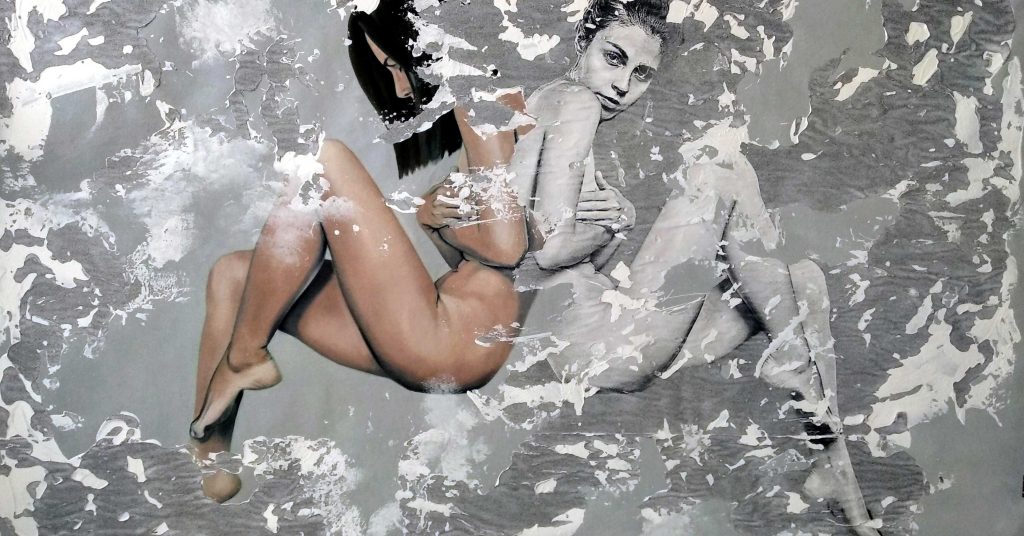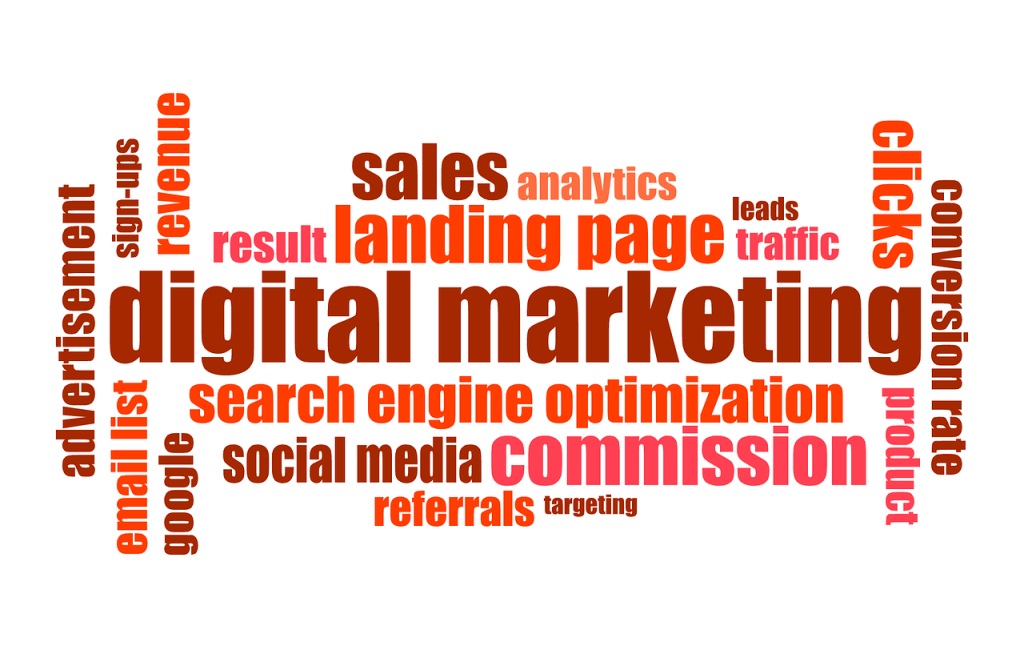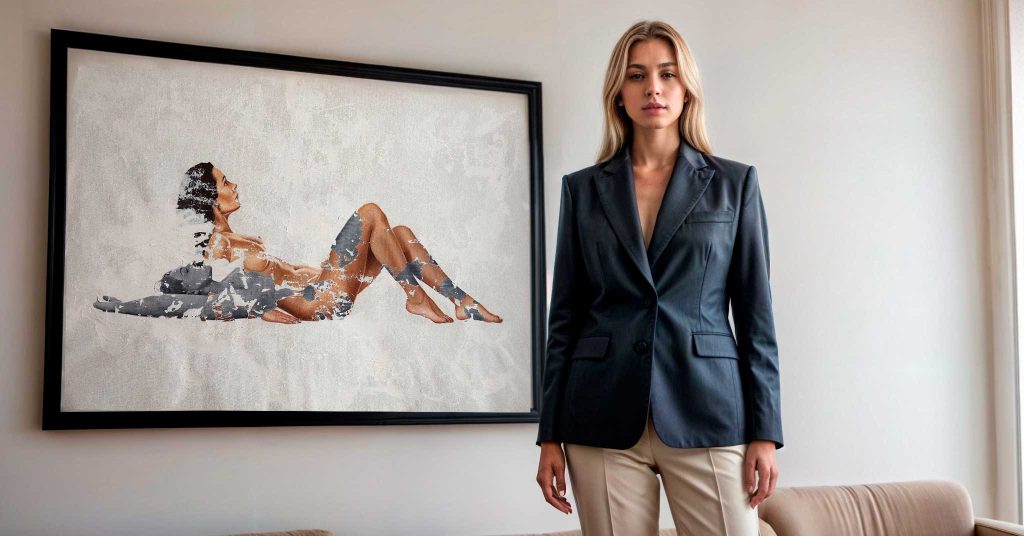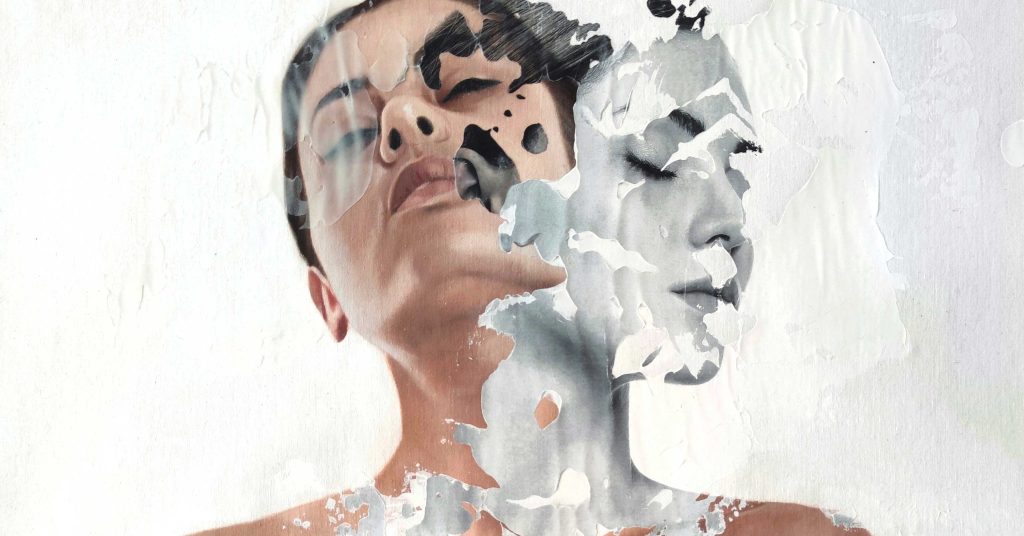
Introduction
Have you ever wondered how some artists manage to get their work featured on products like greeting cards, calendars, mugs, t-shirts, and more? How do they reach such a wide audience and generate income from their art without selling the original pieces? The answer is art licensing.
Art licensing is the process of granting permission to use your artwork for a specific purpose, such as reproduction, distribution, or display, in exchange for a fee or royalty. Art licensing allows you to retain the ownership of your artwork, while letting others use it for their own benefit. It’s a win-win situation for both parties: the licensee gets to use your artwork to enhance their products or services, and you get to earn money from your artwork without giving up your rights.
Art licensing is a huge and growing industry, with many opportunities for artists of all styles and genres. According to a report by the Licensing International, the global licensing market was worth $292.8 billion in 2019, and art licensing accounted for $5.75 billion of that amount. That means there is a lot of demand for art licensing, and a lot of potential for artists who want to tap into this market.
In this article, I will guide you through the basics of art licensing, and show you how you can unlock the potential of your art by licensing it. Whether you’re a beginner or an experienced artist, you will find valuable information and tips on how to succeed in the art licensing industry. Let’s dive in!
What is Licensing Art?


Before we go any further, let’s define what art licensing is and how it works. Art licensing is the legal process of granting permission to use your artwork for a specific purpose, such as reproduction, distribution, or display, in exchange for a fee or royalty. The fee or royalty is usually a percentage of the sales or profits generated by the licensee from using your artwork.
When you license your artwork, you are not selling the original piece or giving up your ownership rights. You are simply allowing someone else to use your artwork for a limited time and scope, as defined by the licensing agreement. You still own the artwork and can use it for other purposes, unless you agree otherwise.
Art Licensing vs. Selling Original Artwork
Art licensing is different from selling your original artwork, which involves transferring the ownership and rights of your artwork to the buyer. When you sell your original artwork, you no longer have any control over how it is used, and you don’t receive any royalties from its future use. You also can’t use it for other purposes, unless you have a contract that states otherwise.
Art Licensing vs. Commissioning Artwork
Art licensing is also different from commissioning your artwork, which involves creating a custom piece of artwork for a client based on their specifications. When you commission your artwork, you are usually paid a flat fee for your work, and you may or may not retain the ownership and rights of your artwork, depending on the contract. You may or may not be able to use it for other purposes, depending on the contract.
Art Licensing Opportunities
Art licensing is a flexible and lucrative way to monetize your artwork, as it allows you to reach a wider audience, generate passive income, and build your brand visibility and recognition. You can license your artwork for various purposes, such as:
Product packaging: You can license your artwork to be used on the packaging of products like cosmetics, food, beverages, etc.
Website design: You can license your artwork to be used on the design of websites, blogs, e-commerce platforms, etc.
Marketing materials: You can license your artwork to be used on the marketing materials of businesses, such as brochures, flyers, posters, banners, etc.
Editorial content: You can license your artwork to be used on the editorial content of publications, such as magazines, newspapers, books, etc.
Merchandise: You can license your artwork to be used on the merchandise of businesses or individuals, such as clothing, accessories, home decor, stationery, etc.
These are just some examples of the many ways you can license your artwork. The possibilities are endless, as long as you find the right licensing partners and negotiate the right licensing agreements.
Who Licenses Art?


Now that you know what art licensing is and how it works, you may be wondering who licenses art and why. The answer is: anyone who needs artwork to enhance their products or services. This can include businessesor even individuals such us:
Art Licensing in Business:
- Advertising agencies: They license artwork to create ads for their clients, such as print, digital, or TV ads.
- Design firms: They license artwork to create designs for their clients, such as logos, branding, packaging, etc.
- Publishers: They license artwork to create content for their publications, such as books, magazines, newspapers, etc.
- Manufacturers: They license artwork to create products for their customers, such as clothing, accessories, home decor, stationery, etc.
- Retailers: They license artwork to sell products to their customers, such as clothing, accessories, home decor, stationery, etc.
These are just some examples of the types of businesses that license art. There are many more, depending on the industry and niche. The common denominator is that they all need artwork to make their products or services more attractive, appealing, and distinctive.
Art Licensing for Individuals:
- Bloggers: They license artwork to use on their blogs, such as headers, backgrounds, icons, etc.
- Influencers: They license artwork to use on their social media platforms, such as profile pictures, stories, posts, etc.
- Artists: They license artwork to use on their own products or services, such as albums, podcasts, videos, etc.
- Consumers: They license artwork to use on their personal items, such as phone cases, laptop stickers, wall art, etc.
These are just some examples of the types of individuals that license art. There are many more, depending on their interests and needs. The common denominator is that they all need artwork to express their personality, style, and taste.
As you can see, there is a huge and diverse market for art licensing, and a lot of potential for artists who want to license their art. The key is to find the right licensing partners who match your vision, style, and goals.
Why License Your Art?


By now, you should have a clear idea of what art licensing is and who licenses art. But you may still be wondering why you should license your art. What are the benefits of art licensing for you as an artist? Here are some of the main reasons why you should consider licensing your art:
Expanding Your Reach and Audience through Art Licensing
Exposure to a Larger Audience:: Art licensing allows you to expose your artwork to a larger and more diverse audience, as your artwork can be seen by millions of people who buy or use the products or services that feature your artwork. This can help you increase your fan base, grow your reputation, and attract new opportunities.
Generating Passive Income with Art Licensing
Royalties and Steady Income: Art licensing allows you to earn money from your artwork without having to sell the original pieces or create new ones. You can receive royalties from the sales or profits generated by the licensees from using your artwork, which can provide you with a steady and recurring income stream. You can also license the same artwork to multiple licensees, as long as you don’t grant exclusive rights to anyone, which can multiply your earnings potential.
Building Brand Visibility and Recognition through Art Licensing
Establishing Brand Identity: Art licensing allows you to build your brand identity and awareness, as your artwork can become associated with the products or services that feature your artwork. This can help you establish your name and style in the market, and create a loyal and engaged following. You can also leverage the exposure and credibility of the licensees to boost your own image and reputation.
These are just some of the benefits of art licensing for you as an artist. There are many more, depending on your goals and aspirations. The bottom line is that art licensing can help you unlock the potential of your art, and take your career to the next level.
Understanding Art Licensing Agreements


If you’re convinced that art licensing is something you want to pursue, the next step is to understand how art licensing agreements work. An art licensing agreement is a legal contract that defines the terms and conditions of the licensing deal between you and the licensee. It specifies what rights you are granting, what fees or royalties you are receiving, and what obligations and responsibilities you and the licensee have.
An art licensing agreement is a crucial document that protects your interests and rights as an artist, and prevents any misunderstandings or disputes with the licensee. Therefore, you should always read and understand the art licensing agreement before signing it, and seek legal advice if you have any doubts or questions.
Key Components of an Art Licensing Agreement
An art licensing agreement can vary depending on the type and scope of the licensing deal, but it usually contains the following key components:
- Usage rights: This section defines what the licensee can and can’t do with your artwork, such as how, where, when, and for how long they can use it, and whether they can modify, reproduce, or sublicense it. It also defines what you can and can’t do with your artwork, such as whether you can use it for other purposes, or license it to other parties.
- Royalty rates: This section defines how much money you will receive from the licensee for using your artwork, and how and when they will pay you. The royalty rate is usually a percentage of the sales or profits generated by the licensee from using your artwork, but it can also be a flat fee or a combination of both. The royalty rate can vary depending on the type and scope of the licensing deal, and it can be negotiated between you and the licensee.
- Exclusivity terms: This section defines whether the licensing deal is exclusive or non-exclusive, and what implications that has for you and the licensee. An exclusive licensing deal means that you grant the licensee the sole right to use your artwork for a specific purpose, and you can’t license it to anyone else for the same purpose. A non-exclusive licensing deal means that you grant the licensee the right to use your artwork for a specific purpose, but you can also license it to other parties for the same or different purposes. An exclusive licensing deal usually offers a higher royalty rate, but a lower exposure and flexibility for you. A non-exclusive licensing deal usually offers a lower royalty rate, but a higher exposure and flexibility for you.
Additional Considerations in Art Licensing Agreements
These are the main components of an art licensing agreement, but there may be other clauses or details that you need to pay attention to, such as:
- Term and renewal: This clause defines how long the licensing deal will last, and whether it can be renewed or extended by either party.
- Termination: This clause defines the conditions and procedures for terminating the licensing deal, and what consequences that will have for both parties.
- Warranty and indemnity: This clause defines the guarantees and responsibilities that you and the licensee have regarding the quality and legality of your artwork, and how you will handle any claims or disputes that may arise from using your artwork.
- Confidentiality: This clause defines the level of secrecy and privacy that you and the licensee have to maintain regarding the licensing deal, and what information you can or can’t disclose to third parties.
As you can see, an art licensing agreement is a complex and important document that you should not take lightly. You should always read and understand the art licensing agreement before signing it, and seek legal advice if you have any doubts or questions. You should also keep a copy of the art licensing agreement for your records, and review it periodically to make sure you are complying with its terms and conditions.
Navigating the Art Licensing Process


Now that you have a basic understanding of how art licensing agreements work, you may be wondering how to actually get started with art licensing. How do you create marketable art, find the right licensing partners, and negotiate the best licensing deals? Here are some steps and tips to help you navigate the art licensing process:
A. Creating Marketable Art
The first step to art licensing is to create art that is suitable and attractive for licensing. This means that your art should:
- Be original and unique: Your art should reflect your own style and voice, and not copy or imitate anyone else’s. Your art should also be free of any plagiarism or infringement issues, and not violate any intellectual property rights of others.
- Be versatile and adaptable: Your art should be able to fit different formats, sizes, and mediums, and be easily modified or customized if needed. Your art should also be able to appeal to different audiences, markets, and niches, and not be too niche or specific.
- Be relevant and trendy: Your art should be able to capture the attention and interest of potential licensees and consumers, and reflect the current trends and demands of the industry and society. Your art should also be able to anticipate and adapt to future trends and changes, and not be outdated or obsolete.
To create marketable art, you should:
- Research and study the market: You should research and study the market that you want to target, and identify the needs, preferences, and expectations of potential licensees and consumers. You should also research and study the competitors and trends in the market, and find out what works and what doesn’t, and what gaps and opportunities exist.
- Develop and refine your portfolio: You should develop and refine your portfolio of artwork, and showcase your best and most relevant pieces. You should also organize and categorize your portfolio by theme, style, genre, or purpose, and make it easy to access and browse. You should also update and refresh your portfolio regularly, and add new and improved pieces.
- Test and get feedback on your art: You should test and get feedback on your art from different sources, such as friends, family, peers, mentors, or online platforms. You should also be open and receptive to constructive criticism, and use it to improve and enhance your art.
B. Finding the Right Licensing Partners
The second step to art licensing is to find the right licensing partners who match your vision, style, and goals. This means that you should look for licensees who:
- Have a good reputation and track record: You should look for licensees who have a good reputation and track record in the industry, and who are known for their quality and professionalism. You should also look for licensees who have a good relationship and communication with their licensors, and who respect and value their artwork.
- Have a compatible and complementary product or service: You should look for licensees who have a product or service that is compatible and complementary with your artwork, and that can enhance and showcase your artwork. You should also look for licensees who have a product or service that is relevant and appealing to your target audience, market, and niche, and that can reach and attract potential consumers.
- Have a fair and favorable licensing deal: You should look for licensees who have a fair and favorable licensing deal, and who are willing to negotiate and compromise with you. You should also look for licensees who have a licensing deal that meets your expectations and requirements, and that offers you a reasonable and rewarding royalty rate, usage rights, exclusivity terms, and other clauses.
To find the right licensing partners, you should:
- Research and network within the industry: You should research and network within the industry, and identify and contact potential licensees who fit your criteria. You should also attend and participate in industry events, such as trade shows, conferences, workshops, etc., and meet and connect with potential licensees in person.
- Approach and pitch to potential licensees: You should approach and pitch to potential licensees, and introduce yourself and your artwork. You should also prepare and present your portfolio, and highlight your strengths and benefits. You should also be professional and courteous, and follow up and maintain contact with potential licensees.
Legal Aspects of Licensing Art


The third step to art licensing is to understand and consider the legal aspects of licensing art, and protect your interests and rights as an artist. This means that you should:
A. Copyright Considerations
- Understand and protect your intellectual property rights: You should understand that as the owner of your artwork, you have the exclusive right to use, reproduce, distribute, display, and license your artwork, and to prevent others from doing so without your permission. You should also protect your intellectual property rights by registering your artwork with the appropriate authorities, such as the U.S. Copyright Office, and by using trademarks, watermarks, or other identifiers on your artwork.
B. Importance of Legal Assistance
- Seek legal counsel for contract review: You should seek legal counsel for contract review, and have a lawyer or an agent review and advise you on the art licensing agreement before signing it. A lawyer or an agent can help you understand and negotiate the terms and conditions of the licensing deal, and ensure that they are fair and favorable for you. A lawyer or an agent can also help you resolve any issues or disputes that may arise from the licensing deal, and protect your interests and rights as an artist.
- Ensure compliance with intellectual property laws: You should ensure compliance with intellectual property laws, and respect and abide by the intellectual property rights of others. You should not use, reproduce, distribute, display, or license any artwork that is not yours, or that you do not have permission to use. You should also not infringe or violate any intellectual property rights of others, such as by copying, imitating, or plagiarizing their artwork. You should also be aware of and follow the intellectual property laws of the countries or regions where you and the licensee operate, and avoid any legal troubles or penalties.
Promoting Your Licensed Art


The fourth step to art licensing is to promote your licensed art, and increase your exposure and recognition as an artist. This means that you should:
A. Building an Online Presence
- Create a portfolio website: You should create a portfolio website, and showcase your artwork and your licensing success stories. You should also include your bio, contact information, and testimonials from your licensees and customers. You should also make your portfolio website easy to find and access, and optimize it for search engines and mobile devices.
- Leverage social media for exposure: You should leverage social media for exposure, and share your artwork and your licensing success stories on various platforms, such as Facebook, Instagram, Twitter, Pinterest, etc. You should also engage with your followers and fans, and respond to their comments and questions. You should also use hashtags, keywords, and tags to increase your visibility and reach.
B. Marketing Strategies
- Showcasing success stories: You should showcase your success stories, and highlight the products or services that feature your artwork, and the benefits and results that they bring to the licensees and consumers. You should also share the stories behind your artwork and your licensing journey, and the challenges and achievements that you faced and overcame.
- Collaborating with influencers and brands: You should collaborate with influencers and brands, and partner with them to promote your artwork and your licensed products or services. You should also seek endorsements and reviews from them, and leverage their authority and credibility to boost your own image and reputation.
Success Art Licensing Stories: Learn from the Pros
The final step to art licensing is to learn from the pros, and get inspired and motivated by their success stories. Here are some examples of artists who have excelled in art licensing, and some insights into their strategies and key takeaways:


Mary Engelbreit
Mary Engelbreit is a renowned illustrator and author, who is known for her colorful and whimsical artwork that features positive and uplifting messages. She has licensed her artwork to over 6,500 products, such as greeting cards, calendars, books, fabrics, home decor, and more. She has also created her own magazine, website, and online store. Her strategy is to create artwork that resonates with her audience, and that reflects her own personality and values. Her key takeaway is to be authentic and consistent, and to stay true to your vision and voice.
Andy Warhol
Andy Warhol is a legendary and influential artist, who is known for his pop art artwork that features iconic and controversial images of celebrities, consumer products, and social issues. He has licensed his artwork to countless products, such as posters, prints, clothing, accessories, cosmetics, and more. He has also founded his own studio, magazine, and foundation. His strategy is to create artwork that reflects and critiques the culture and society of his time, and that provokes and engages his audience. His key takeaway is to be bold and innovative, and to challenge and redefine the norms and expectations of art.




Lisa Congdon
Lisa Congdon is a prolific and versatile artist, who is known for her abstract and geometric artwork that features vibrant colors and patterns. She has licensed her artwork to over 200 products, such as clothing, accessories, stationery, wallpaper, and more. She has also written and illustrated several books, and taught online classes. Her strategy is to experiment and explore different styles and mediums, and to challenge herself and grow as an artist. Her key takeaway is to be curious and adventurous, and to embrace change and diversity.
These are just some examples of the many artists who have mastered the art of licensing, and who have achieved success and recognition in the industry. You can learn more about them and their stories online, and find out how they started and progressed in their art licensing careers. You can also find other artists who inspire and motivate you, and follow their journeys and achievements.
Conclusion
Engaging in art licensing is a fulfilling and dynamic avenue to monetize your creations while showcasing them to a global audience. This process not only broadens your reach and audience base but also facilitates the generation of passive income, contributing to the establishment and growth of your brand’s visibility and recognition. Importantly, art licensing empowers you to preserve ownership and rights over your artwork, all while enabling others to utilize it for their own purposes and benefits.
To succeed in art licensing, you need to understand and follow the basics of art licensing, such as:
- Creating marketable art that is original, versatile, and relevant
- Finding the right licensing partners that have a good reputation, a compatible product or service, and a fair and favorable licensing deal
- Understanding and negotiating the art licensing agreements that define the usage rights, royalty rates, exclusivity terms, and other clauses
- Understanding and considering the legal aspects of licensing art, such as protecting your intellectual property rights, seeking legal counsel, and ensuring compliance with intellectual property laws
- Promoting your licensed art by building an online presence, using marketing strategies, and collaborating with influencers and brands
- Learning from the pros by getting inspired and motivated by their success stories, and adopting their strategies and key takeaways
Art licensing is not easy, and it requires a lot of work and dedication. But it is also fun and fulfilling, and it can open up many doors and opportunities for you as an artist. If you have a passion and a talent for art, and a desire and a vision to license it, you can achieve your goals and dreams. You just need to take the first step, and start your art licensing journey today. Good luck and have fun!
FAQs
- What is the primary difference between selling originals and licensing art?
- Selling originals involves a one-time transaction, while licensing allows for multiple uses, generating passive income through royalties.
- Which businesses commonly use licensed art?
- Ad agencies, design firms, and product manufacturers are among the businesses that frequently license art for commercial applications.
- How can artists safeguard their creativity in art licensing?
- Artists can safeguard their creativity by understanding copyright protection, registering their artwork, and seeking legal advice for contract review.
- What are the key components of art licensing agreements?
- Art licensing agreements include essential elements such as usage rights, royalty structures, and exclusivity terms.
- How can artists promote their licensed art effectively?
- Building a strong online presence, utilizing social media marketing, and implementing marketing strategies like success stories and collaborations can help artists promote their licensed art successfully.




